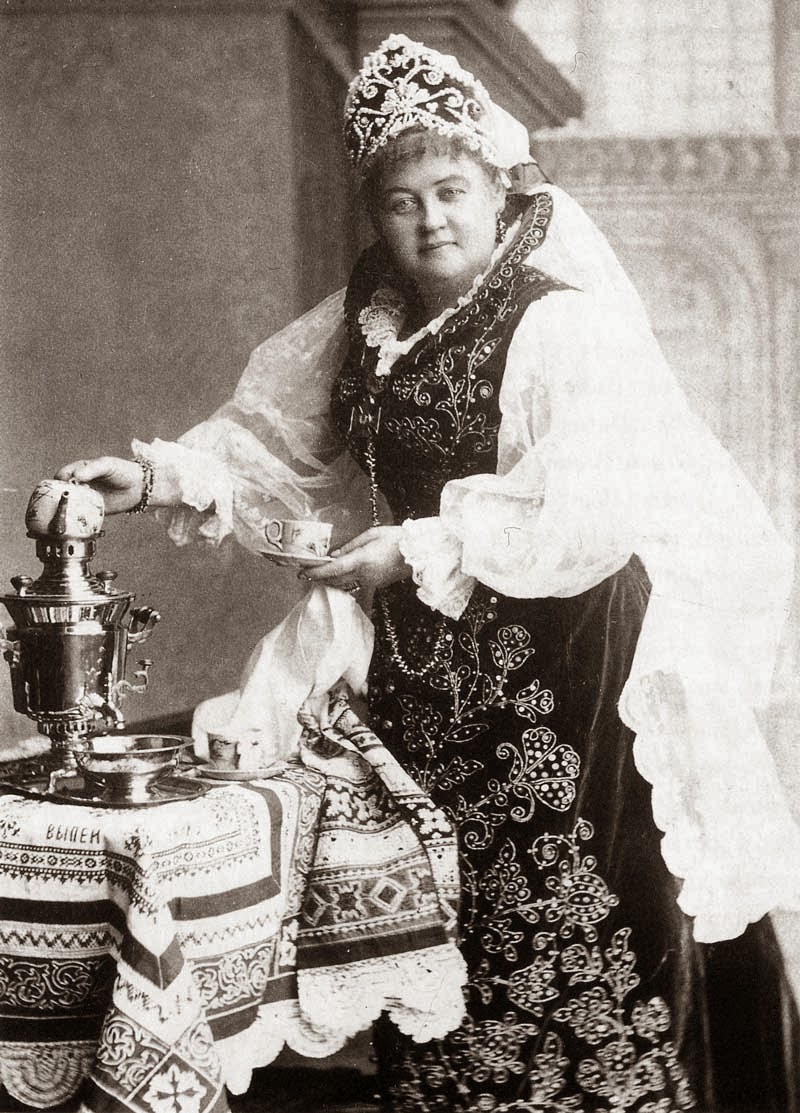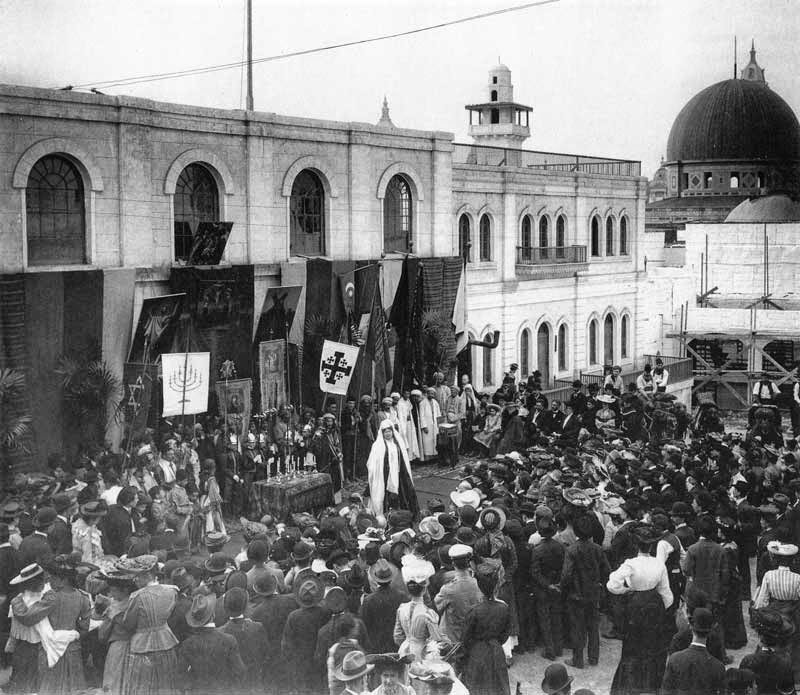Israel's History - a Picture a Day (Beta) |
|
Posted: 10 Jun 2014
She was born in Jerusalem to a Russian family, apparently Jewish, according to historian Ron Bartur. She spoke Russian, Arabic, Hebrew, German, and French. The family converted to Christianity and it appears she later became a Mormon.
She was a popular actress, missionary, and news correspondent. She traveled to the United States, Great Britain, Australia and New Zealand presenting Bible-based plays. She filed news reports on the German Emperor's visit to Jerusalem in 1898, and probably appears in the bottom left of this picture with a reporter's pad in hand.
One of her most interesting articles appeared in the Aroha News (New Zealand), October 24, 1888, entitled "PALESTINE FIFTY YEARS AGO AND PALESTINE TODAY." Her observations about life in the Holy Land for Christians and Jews are fascinating, and we present excerpts below in blue:
The monks confined themselves to their daily avocations in the convents, and to the entertainment of wealthy pilgrims and travellers, whose visits, like those of angels, were few and far between.
The Jews, as well as the native Christians, throughout Syria and Palestine, were daily and hourly subjected to oppression, extortions, exaction, robbery and insults from their Moslem neighbours. It was no unusual occurrence for the Moslem to enter their houses, ransack closets and boxes, and appropriate any article of wearing apparel, furniture, or food that took the marauder's fancy.
The local Government authorities would occasionally, when in need of funds, levy blackmail to the amount of hundreds of pounds on the Jews and native Christians, threatening them with massacre and plunder in default of payment. Consequently, Jews and native Christians dared to make any display of wealth only at the risk of losing life or property, and often both....
... With the advent of the American and English missionaries came the dawn of a brighter day tor the Holy City, and indeed for the whole country. On account of Moslem fanaticism and prejudice, these messengers of the Gospel, and consequently pioneers of civilisation, were obliged for a certain period of time to adopt the Oriental dress for safety. The Oriental furniture, utensils, and cuisine, though in
Occidental furniture, utensils, crockery or glass, were not to be had for love or money; and only those fortunate families or individuals possessed them who had had sufficient foresight to bring such articles from their homes in Europe. Further, there was not a window in any house in Jerusalem that had a pane of glass in it; wooden lattices, shutters, and iron bars being the order of the day.
About the year 1845, a European merchant first imported —at great inconvenience, risk, and cost, having to travel to Beirout and Alexandria to make the purchase—Occidental furniture, crockery, and windowglass. There were no facilities for travel, and no steamers touched at the port of Jaffa.
Once, and later twice a year, the Jewish, Latin, and other communities sent messengers to Beirout from Jerusalem, a journey of about 150 miles overland, to fetch the mails and other matter that might have been brought by the steamers from Alexandria and Constantinople, which at stated periods touched for a few hours at Beirout. About the year 1845 steamers began to stop occasionally at the port of Jaffa...
In the year 1866 a large American colony came out, and settled in Jaffa. It was called the American Adams colony. The colonists held their estate under great disadvantages. Mr Adams, either through design or in ignorance of the laws, possessed no title deeds; neither were the colonists, who purchased lots, provided with the necessary documents — all holding the property under bills of sale and pm-chase, whose legality and validity could have been questioned at any moment. Consequently interested parties took advantage of their position, and the best and the largest portion of the land they had paid for was lost, and all the trees out of a fruit plantation cut down, rooted up, and carried away...
|





